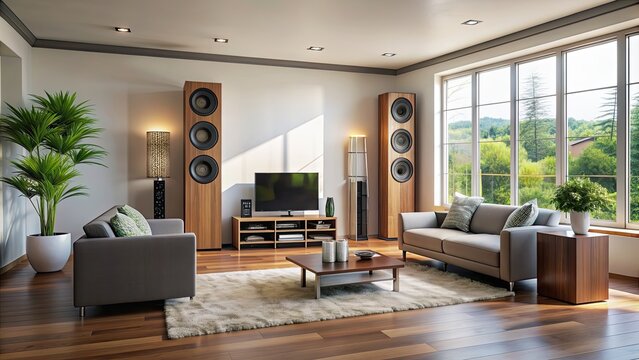Stereo system speakers are a vital component of any high-quality audio setup, playing a central role in delivering clear, rich, and immersive sound. Whether you’re a music enthusiast, a movie buff, or a gamer, the type and quality of speakers in your stereo system can greatly affect your overall listening experience. In this article, we will explore the different types of home audio systems, how they work, and what to look for when selecting the right speakers for your audio setup.
What Are Stereo System Speakers?
Stereo system speakers are designed to reproduce sound from a variety of audio sources, such as a home stereo, television, or even a computer. The term “stereo” refers to sound being delivered from two distinct channels (left and right), which creates a sense of space and directionality in the audio. Stereo speakers are typically paired in a two-speaker setup, but larger systems may incorporate more channels for a more expansive soundstage.
Types of Stereo System Speakers
There are several types of stereo speakers, each with its own characteristics and intended use. The most common types include:
- Bookshelf Speakers
- Overview: Compact and versatile, bookshelf speakers are designed to fit in smaller spaces while still delivering clear, balanced sound. Despite their size, many bookshelf speakers are capable of producing high-quality audio and are often used in home audio systems.
- Best For: Small to medium-sized rooms, casual listening, and audiophiles seeking a compact yet powerful solution.
- Advantages: Space-saving, relatively affordable, and able to deliver excellent sound quality for their size.
- Floorstanding (Tower) Speakers
- Overview: Larger than bookshelf speakers, floorstanding speakers are designed to deliver powerful, full-range sound. These speakers typically have multiple drivers for low, mid, and high frequencies, allowing for a more dynamic and immersive audio experience.
- Best For: Larger rooms, home theaters, or audiophiles who want superior sound quality and deeper bass.
- Advantages: Enhanced bass response, better sound dispersion, and powerful audio performance across a wider frequency range.
- Satellite Speakers
- Overview: Smaller speakers, typically used in home theater systems, designed to handle high frequencies. They are often paired with subwoofers to produce deep bass sounds that smaller speakers can’t achieve on their own.
- Best For: Home theater systems or compact setups where space is limited but high-quality sound is still desired.
- Advantages: Compact design, excellent for surround sound setups when combined with a subwoofer.
- Subwoofers
- Overview: Subwoofers specialize in reproducing low-frequency sounds, typically below 100 Hz. They are designed to handle the bass and deep rumbles that add power and richness to music, movies, and gaming audio.
- Best For: Adding depth and fullness to any audio system, particularly in home theaters or high-end audio setups.
- Advantages: Powerful bass, adds a sense of depth and realism to audio.
- In-Wall and In-Ceiling Speakers
- Overview: These speakers are mounted directly into the walls or ceiling, providing a more discreet solution for home audio. They are ideal for those who want a clean, minimalist look without sacrificing sound quality.
- Best For: Home audio setups in which aesthetics are important or when a more permanent installation is preferred.
- Advantages: Space-saving, sleek appearance, and great for custom audio installations.
How Do Stereo System Speakers Work?
Speakers work by converting electrical signals from your audio source into sound waves. The process involves the following key components:
- Drivers: The main part of a speaker that converts electrical signals into sound. Most speakers use multiple drivers (such as woofers, tweeters, and midrange drivers) to handle different frequencies.
- Amplifiers: These electronic devices boost the audio signal to a level that the speakers can process effectively. Most stereo systems have built-in amplifiers, but some high-end setups use external amplifiers for better sound quality.
- Crossover: A crossover is an internal component that divides the audio signal into different frequency ranges before sending it to the appropriate drivers. It ensures that bass frequencies are sent to the woofer, midrange frequencies to the mid-range driver, and treble frequencies to the tweeter.
